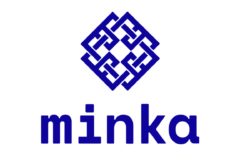Despite the growth of many payment channels such as apps and QR codes, Africans continue to use USSD more for making payments across banking and mobile money products. USSD-based transactions were used for mobile money and cross-domain transactions due to their straightforward and user-friendly interface that does not require a smartphone or internet connectivity. These USSD channels, which contributed 70% of instant payment channels as of June 2023, have been key in facilitating transactions that go beyond traditional mobile money services, including transactions between different financial institutions.
In Ghana and Kenya, mobile money systems, particularly those using offline channels like USSD, are popular and supported by customers over card-based systems. This strong preference aligns with the percentage of people with mobile money accounts at 60% in Ghana and 69% in Kenya. However, while USSD is popular, it has been cited as a barrier to ease of use in payments. “Complex USSD menus and failed transactions are particularly detrimental to use,” said AfricaNenda, a digital payment strategy organisation in its inclusive instant payment systems (IIPS) report.
Cross-domain instant payment systems facilitate interoperability between banks and non-banks, enabling transactions across both bank and mobile money accounts. While app channels follow USSD in terms of popularity, they introduce friction points like access to smartphones and internet connectivity, the adoption of which stands at 51% and 43.2% respectively.
There is a growing acceptance of quick response (QR) codes as another channel. Cross-domain and bank IPS offer the broadest array of channels, whereas mobile money instant payments typically favour agent, USSD, and app channels. According to AfricanNenda, which released an instant payments systems (IPS) report in November 2023, this diversity shows the evolving financial services ecosystem in Africa.
Per AfricaNenda, electronic money (e-money) instruments are also popular, with widespread support from mobile money and cross-domain instant payment systems. Cross-domain systems also use commercial money instruments like credit and debit electronic funds transfer (EFT), while bank IPS focus on credit EFT, with debit EFT as a secondary instrument. This diversity underscores the varied payment methods in use across different payment systems.
“For an IPS to be a cross-domain system, it must have a switching capacity between commercial money instruments (such as debit electronic funds transfer (EFT), credit EFT, and domestic card instruments) and e-money instruments. Operators use one of two approaches to achieve a cross-domain IPS,” said AfricaNenda in the report.
IIPS is important because the demand for instant digital payments is growing. In 2021, 50% of Sub-Saharan African adults used digital payments, up from 34% in 2017.





















